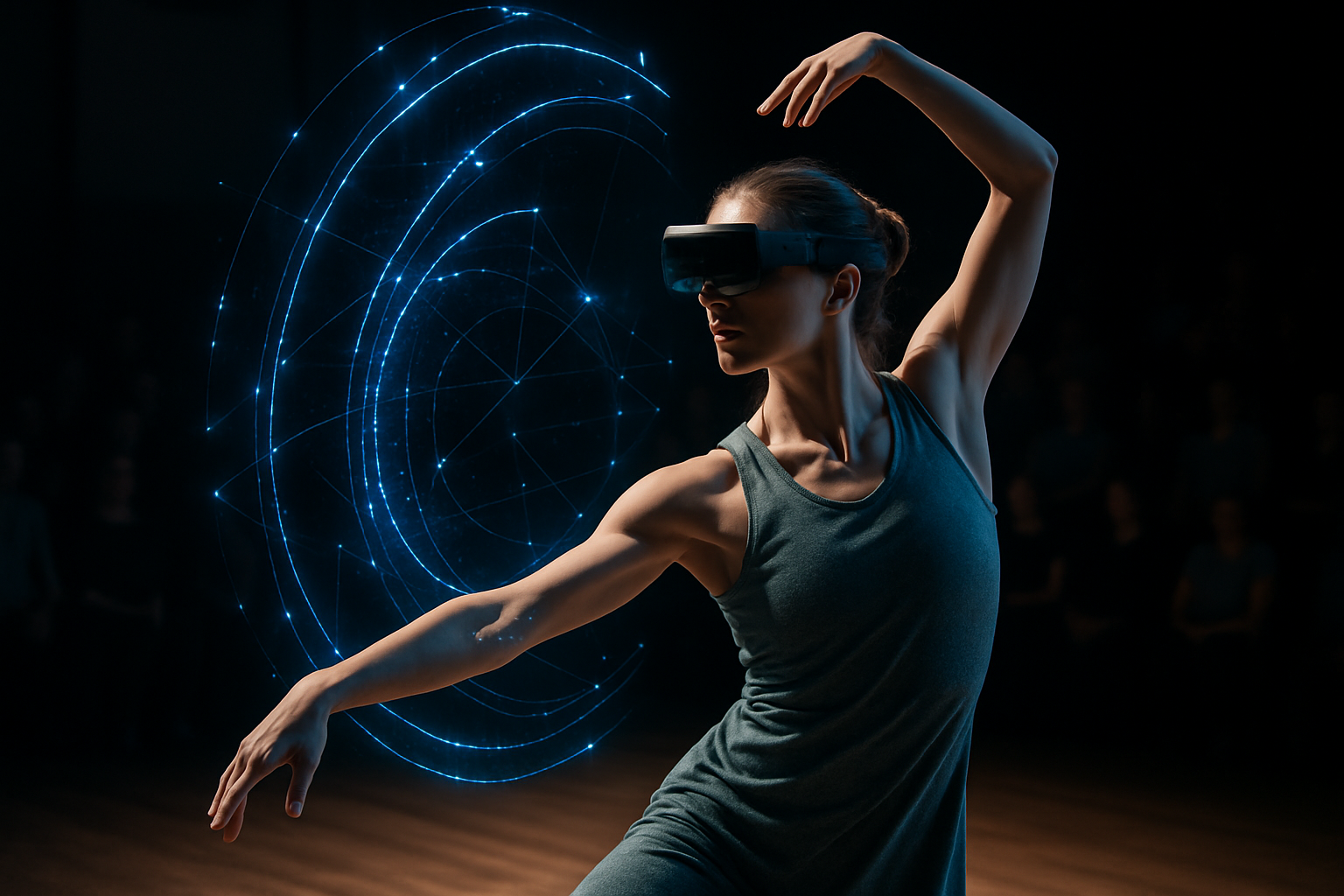Augmented Reality Transforms Contemporary Dance
In a stunning fusion of technology and human movement, augmented reality (AR) is revolutionizing the landscape of contemporary dance. This groundbreaking integration is pushing the boundaries of artistic expression, challenging traditional notions of performance spaces, and redefining the relationship between dancers and their audience. As AR technology becomes more sophisticated and accessible, choreographers and dancers are embracing its potential to create immersive, interactive experiences that blur the lines between the physical and digital realms.

Technological Advancements Fuel Creative Possibilities
Recent years have seen a surge in AR capabilities, driven by improvements in computer vision, real-time rendering, and mobile computing power. Modern AR systems can track dancers’ movements with unprecedented accuracy, allowing for dynamic, responsive digital overlays that seamlessly integrate with live performances. This technological leap has opened up new avenues for artistic expression, enabling choreographers to create virtual sets, costumes, and even dance partners that respond in real-time to the performers’ movements.
Redefining the Performance Space
One of the most significant impacts of AR in contemporary dance is the transformation of traditional performance spaces. No longer confined to physical stages, dancers can now interact with virtual environments that extend far beyond the boundaries of the theater. Audiences are transported to fantastical landscapes, abstract realms, or historically accurate recreations, all while the dancers move through the physical space before them. This blending of realities creates a uniquely immersive experience that challenges viewers’ perceptions and enhances the emotional impact of the performance.
Interactive Storytelling and Audience Engagement
AR technology is also revolutionizing the way stories are told through dance. Choreographers can now layer digital narratives onto physical movements, creating multi-dimensional performances that engage audiences on multiple levels. Interactive elements allow viewers to influence the course of the performance, blurring the line between spectator and participant. Some productions have experimented with personalized AR experiences, where each audience member can choose to follow different narrative threads or focus on specific dancers, creating a truly individualized interpretation of the work.
Challenges and Controversies
Despite its potential, the integration of AR into contemporary dance has not been without controversy. Some traditionalists argue that the technology detracts from the purity of human movement and the intimacy of live performance. There are also concerns about the accessibility of AR-enhanced productions, as they often require specialized equipment or applications that may not be available to all audience members. Additionally, the reliance on technology introduces new potential points of failure, raising questions about the resilience and reproducibility of these cutting-edge performances.
The Future of AR in Dance
As AR technology continues to evolve, its role in contemporary dance is likely to expand further. Emerging technologies like haptic feedback and advanced spatial audio promise to enhance the immersive qualities of AR-enhanced performances. Some visionaries in the field are already exploring the possibilities of remote collaborative performances, where dancers in different physical locations can interact in a shared virtual space. The potential for AR to democratize dance creation and consumption is also being explored, with platforms emerging that allow amateur choreographers to experiment with digital enhancements and share their work globally.
In conclusion, the integration of augmented reality into contemporary dance represents a paradigm shift in the world of performing arts. By embracing this technology, choreographers and dancers are pushing the boundaries of creativity, challenging audience expectations, and opening up new possibilities for artistic expression. As AR continues to evolve, it promises to play an increasingly significant role in shaping the future of dance, offering exciting new avenues for innovation and engagement in this timeless art form.





